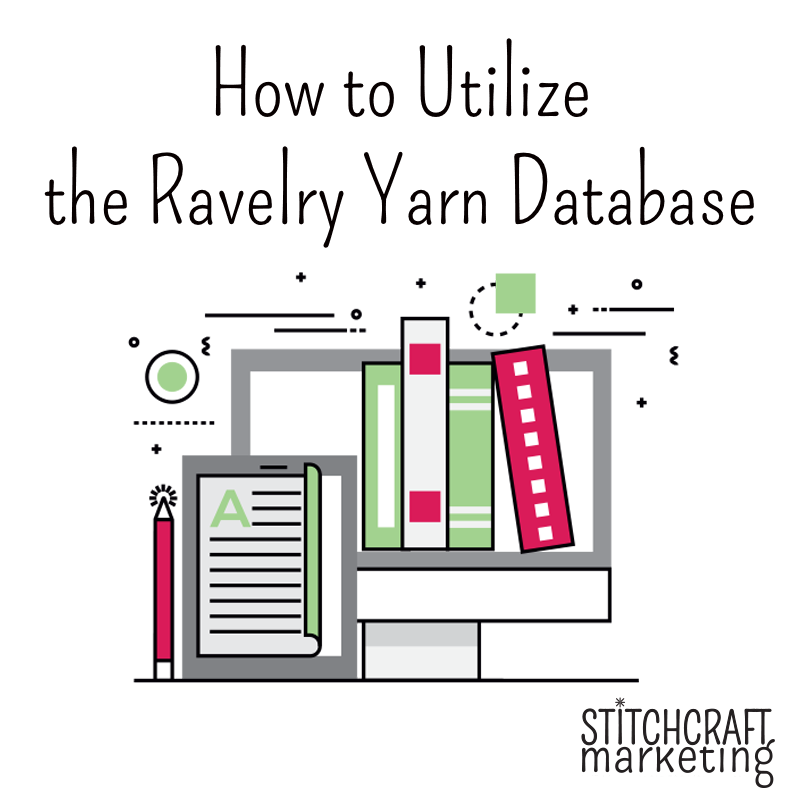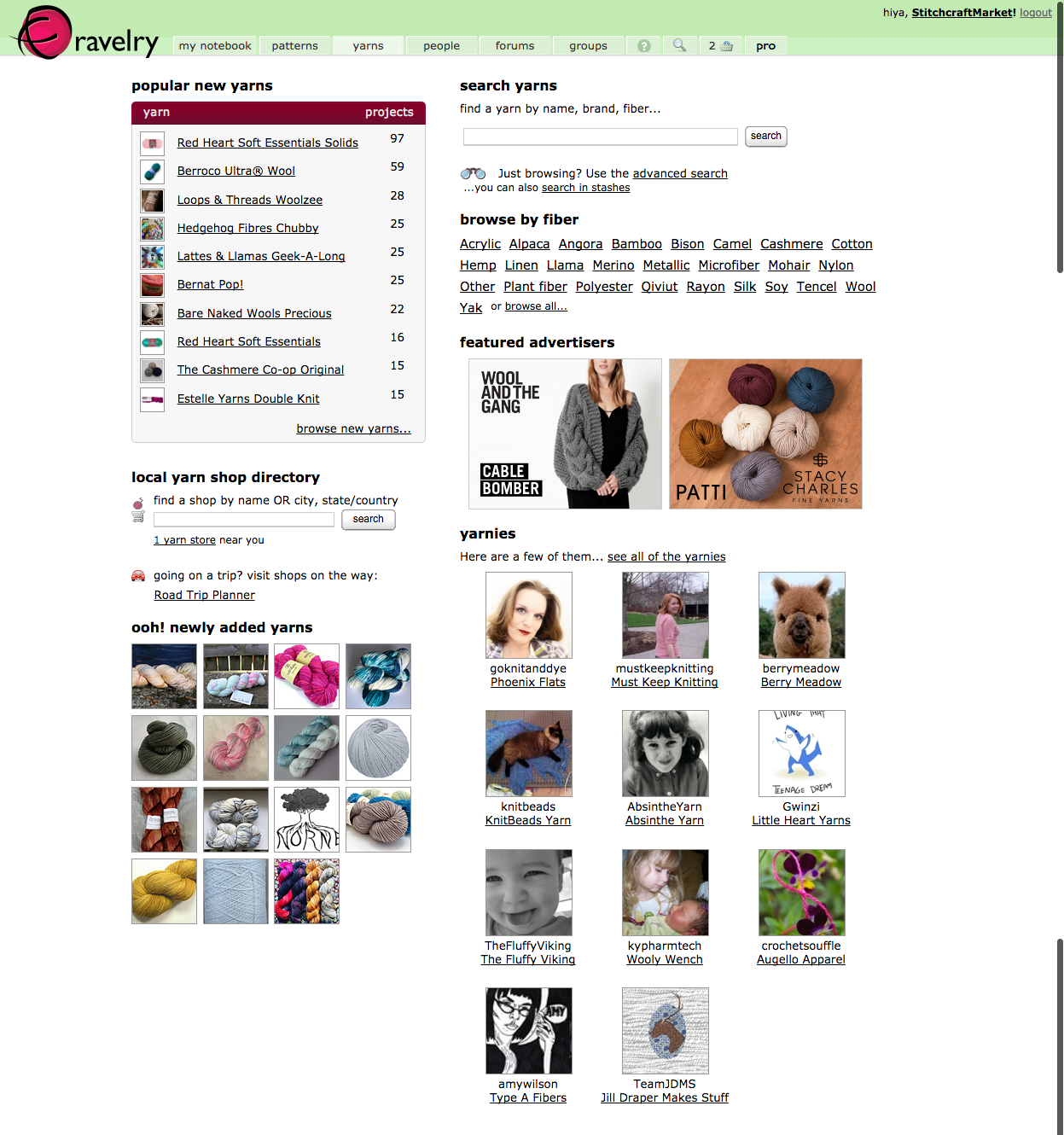08 Mar Overview: Ravelry Yarn Database
 You’re a yarn manufacturer, and you want to sell yarn. While there are many avenues where you can advertise your yarns – knitting magazines, Facebook, Instagram, and in-person at industry shows – those often cost money with difficult to measure results. We also know that word-of-mouth and influencer marketing are a large source of where sales come from, so how do you capitalize on that type of marketing?
You’re a yarn manufacturer, and you want to sell yarn. While there are many avenues where you can advertise your yarns – knitting magazines, Facebook, Instagram, and in-person at industry shows – those often cost money with difficult to measure results. We also know that word-of-mouth and influencer marketing are a large source of where sales come from, so how do you capitalize on that type of marketing?
Enter the Ravelry community and the yarn database tool. This tool is often under-rated, under-utilized, and pretty often underestimated. To understand the power of this database and why it is important to keep updated for your brand, we should look at how knitters use this tool:
- Keeping Track of Stash.
Though many yarnies would admit that they don’t record everything in their stash, there are many Ravelry users who are fastidious in keeping up with adding new purchases and acquisitions to their “stash” page on Ravelry. This data can help the manufacturer see on a consumer level, what people are stashing. Are there certain colorways people love? Are there bases that knitters can’t seem to get enough of? All of this information can be seen by anyone who is interested in a specific yarn. If that yarn doesn’t exist in the database, it might as well not exist at all.
- Logging Project Details.
When a user sets up a project in their notebook, they can link to yarns and the companies that make them. This may be the most important aspect of the Ravelry yarn database, and the one that most Ravelry users do utilize, because it allows them to keep track of details such as color name, dye lot number, where it was purchased (and for how much, if they are so inclined), as well as how much of it was used in the project.
However, both of these functions will only be useful to a yarn company if they keep their existing yarn pages updated and are diligent about adding new offerings to the database. Since Ravelry is a user-created and maintained database, the downside is that sometimes duplicate or inaccurate entries are added; adding your newest yarns in a timely fashion will not only make it easier for your customers to add it to their stash, it will also prevent the spread of inaccurate information should User X accidentally enter the incorrect yardage or fiber content without your notice. The Ravelry database allows users to search by virtually any parameter, so the more information you can provide, the more likely your yarn is going to show up should someone be looking for a laceweight angora that has at least 400 yards in a skein, for example.
There are more benefits to ensuring your yarns are all listed on Ravelry, however. First, this allows any of your retailers who carry your yarns to purchase “Buy This Yarn! Ads” which are displayed when any user is viewing a specific yarn page (for more info on Ravelry ad types, see their guide here) – and we don’t need to tell you that the more yarn they’re able to sell, the more often they’ll reorder from you!
Next, yarns entered into the database are displayed to users in a number of ways: for instance, the algorithm that determines which colorways show up on the colorway tab of any yarn’s page takes many factors into consideration, including the number of projects using that specific yarn and how many times it’s been stashed by users. A list of Popular New Yarns is also front and center on the “Yarns” landing page, a list that is generated by the number of projects that a new yarn has (Ravelry defines “new” as no more than 2 months old). Lastly, Newly-stashed yarns are also displayed to users who are browsing the Yarn section, as well as their friend activity.
That’s quite a bit of free exposure up for grabs….so how do you get knitters to stash your yarn or post their projects?
- Ask them! Engage on social media if you see them working with your yarn, asking if they’ve added it to their Ravelry stash. You could also ask your newsletter subscribers to enter newly-purchased skeins into their stash – and it’s great customer service to send them a guide to help them do so. By having them post their stash and personal projects on Ravelry helps in the beginning, to help get the database up and rolling.
- Reach out to industry influencers. Look for bloggers or podcasters with a large and devoted audience who use Ravelry as a meeting ground for their fans – most likely, they will also be major users of the database tools that Ravelry has to offer. Some bloggers in the knitting industry are major tastemakers and trend-influencers; getting your yarns into the hands of the right person could change your sales significantly.
- Create patterns in your yarns! If you don’t have a team in-house to do this, we can help coordinate calls for submissions with our Pattern Support services. The more patterns you have for your yarns, the more likely it will be that people will create those patterns with your yarns.
These tips all have one thing in common: call upon your community! There are few industries with communities that are as close-knit (pardon the pun) as that of yarn and fiber folks. Most are happy to support one another and companies that they believe in. Sometimes, all you have to do is ask.
If you want more reading on Ravelry, and how it has evolved over the years and the advantages and challenges it faces in 2017, read Part 1 and Part 2 of “The Evolution of Ravelry.”



No Comments